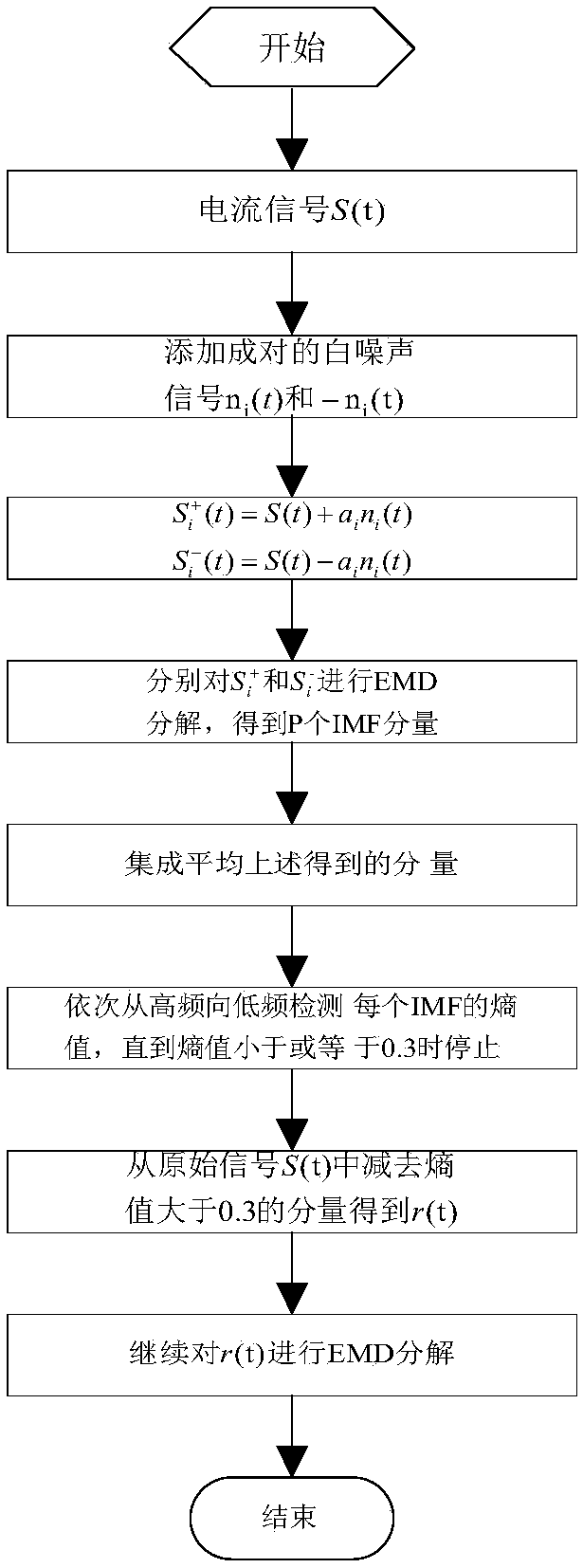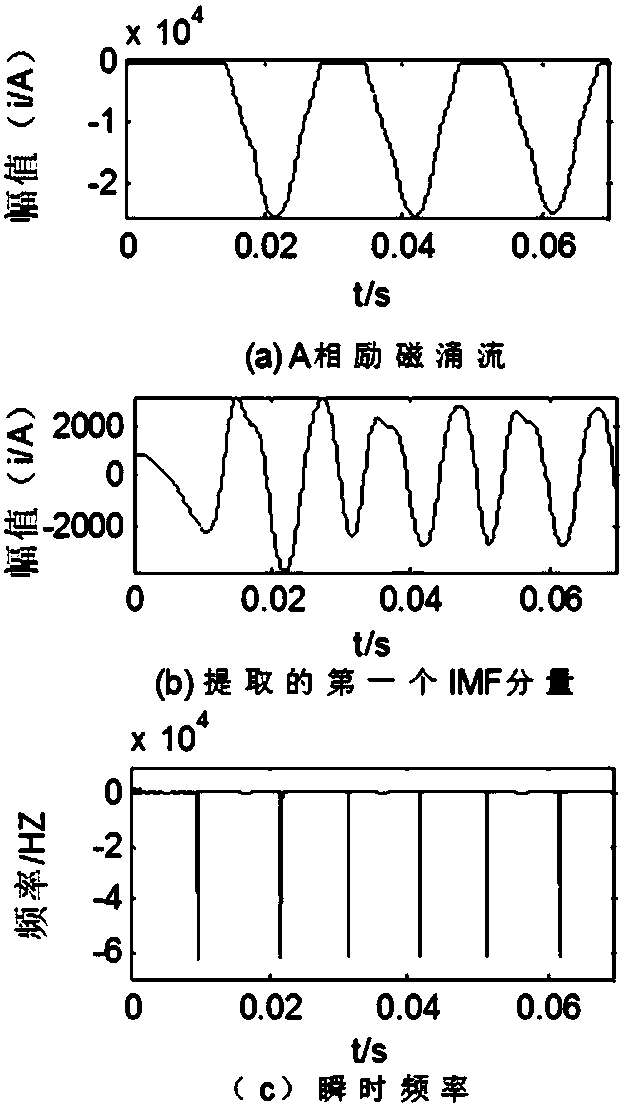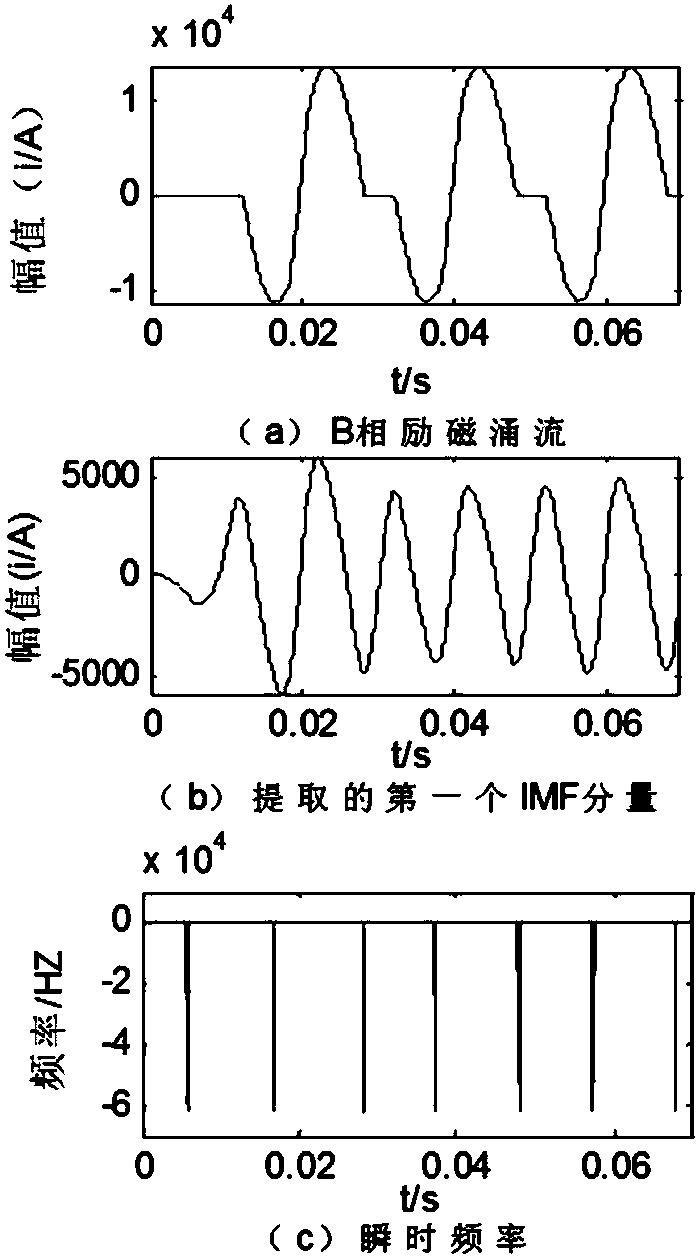Transformer magnetizing-inrush-current identification method based on MEEMD algorithm
A technology of excitation inrush current and identification method, which is applied in transformer testing, instrumentation, and measurement of electrical variables, etc. It can solve the problems of modal aliasing, difficulty in increasing the action speed, and misoperation, etc., and achieve the effect of short identification time
- Summary
- Abstract
- Description
- Claims
- Application Information
AI Technical Summary
Problems solved by technology
Method used
Image
Examples
Embodiment Construction
[0064] Below in conjunction with accompanying drawing and specific embodiment the present invention is described in further detail:
[0065] The present invention is a transformer excitation inrush current identification method based on the MEEMD algorithm, the process of which is as follows Figure 5 As shown, it specifically includes the following steps:
[0066] Step 1: Collect differential current signals on both sides of the transformer; figure 2 a. image 3 a. Figure 4 As shown in a; after MEEMD decomposition, several intrinsic mode functions that meet the IMF conditions, that is, IMF components, are obtained.
[0067] The MEEMD method uses the permutation entropy to detect the randomness of the signal, removes the high-frequency signal, noise signal and intermittent signal with relatively large entropy value from the original signal, and then performs EMD decomposition on the remaining signal to obtain a relatively regular and stable signal.
[0068] The content o...
PUM
 Login to View More
Login to View More Abstract
Description
Claims
Application Information
 Login to View More
Login to View More - Generate Ideas
- Intellectual Property
- Life Sciences
- Materials
- Tech Scout
- Unparalleled Data Quality
- Higher Quality Content
- 60% Fewer Hallucinations
Browse by: Latest US Patents, China's latest patents, Technical Efficacy Thesaurus, Application Domain, Technology Topic, Popular Technical Reports.
© 2025 PatSnap. All rights reserved.Legal|Privacy policy|Modern Slavery Act Transparency Statement|Sitemap|About US| Contact US: help@patsnap.com



